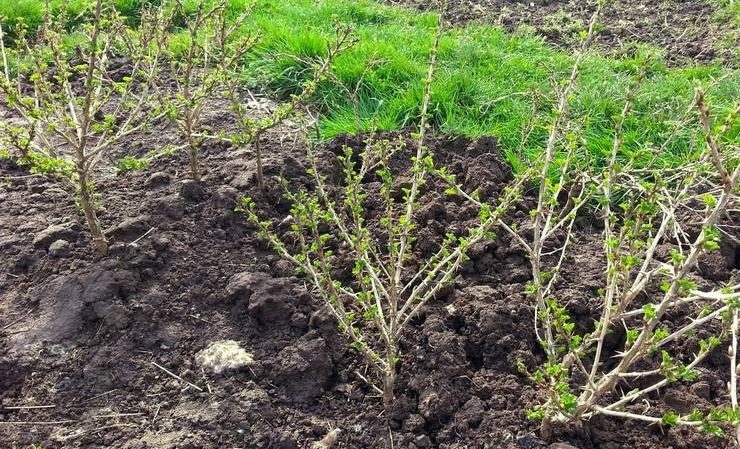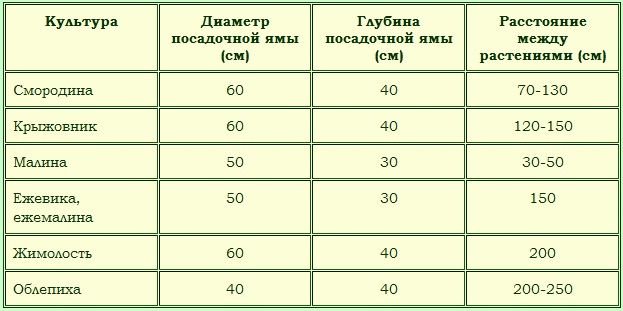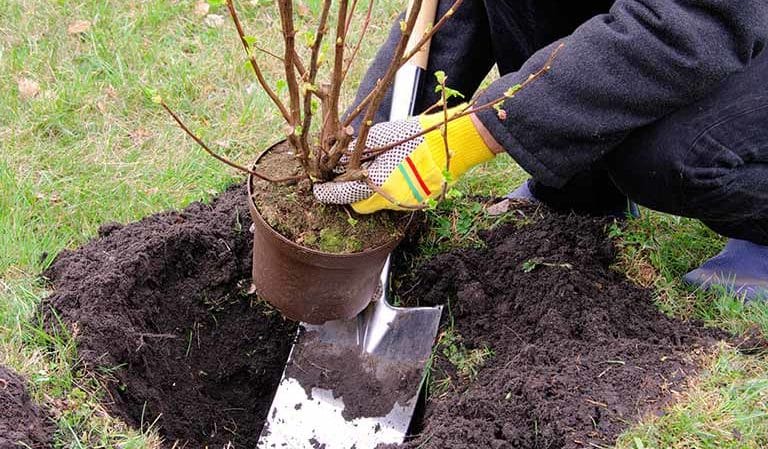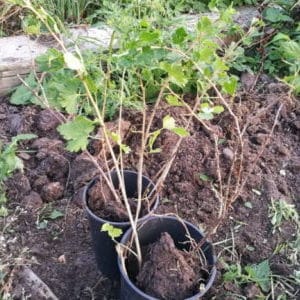At what distance from each other are gooseberry and currant bushes planted?
Each summer resident has his own opinion when it is better to plant gooseberries and currants: in the spring, when the snow has melted and the air has warmed up, or in the fall, a month before frost. The plant’s immunity, its appearance, the size and taste of the fruit depend on the correct choice of planting time. It is important to pay attention to the choice of planting material, placement of seedlings in the garden plot, and preparation of holes.
How to plant gooseberries and currants correctly and what recommendations experienced gardeners give in this regard, we will consider in the article.
When is it better to plant currants and gooseberries - in spring or autumn?
Early spring or late autumn is suitable for planting fruit bushes. The advantages of spring planting are that summer residents prepare the planting hole in advance and fertilize it with rotted manure or bird droppings.
Over the winter, garden soil turns into nutritious soil. In the regions, frosts are less common in spring, so seedlings are protected from sudden climate changes.

However, spring planting also has disadvantages: after winter, pathogens become more active diseases and pests, which attack young, immature plants. Also hard to find in spring healthy seedlings, you have to prepare planting material in advance and store it in the house.
If you plant gooseberries or currants in the fall, such problems will not arise. In September and October, nurseries offer a large assortment of different varieties; after purchase, they are disinfected and immediately planted on the site.Autumn rains provide the plant with a moist environment, which has a good effect on the development of fruit bushes.
According to statistics, autumn plantings of gooseberries and currants take root better. In the southern regions, the plant is planted in late October, in the middle zone and Moscow region - in mid-September, in the Urals and Siberia - in early September.
Attention! And yet there is no universal answer to the question of when it is better to plant gooseberries and currants - in spring or autumn. When choosing a date, take into account the growing region, climate, soil composition, and variety.
Rules for planting gooseberries
Planting gooseberries and currants in open ground will not take much time and effort if you follow the recommendations of experienced gardeners. The tips are relevant for both spring and autumn planting.
At what distance should gooseberries be planted from each other and from currants?

Fruit bushes are sensitive to the lack of sunlight, so gardeners plant them in spacious and well-lit areas. If you plant gooseberries or currants in the shade or partial shade, the seedling will take root, but the yield will decrease. The frequency of planting also affects the amount of harvest: the denser the seedlings are, the fewer fruits will ripen. To increase productivity, legumes, herbs, and root crops are grown between rows.
Shrubs are planted in rows. The distance between them should be at least 1.5 m, if the plants have a spreading and dense crown - at least 2 m. The interval between rows is about 2.5 m. The distance between the bushes and the fence is at least 1.2 m. These values apply to both planting gooseberries and currants.
Attention! Do not plant gooseberries near raspberries - the plants have the same diseases and pests. In addition, raspberries can suppress the growth of gooseberries.Also, fruit trees - pear, plum, apple - are not placed nearby. Plants interfere with each other's development. A suitable neighbor is honeysuckle. Cultures have different diseases, they do not interfere with each other.
Site selection and soil preparation

For planting, choose dry and loose soils. Swampy and low-lying lands are not suitable - due to stagnation of water, plant roots become rotten and sick. For the same reason, there should be no groundwater nearby. Also, when planting, drafts and shady areas are avoided, since gooseberries love sunlight and warmth.
For spring planting pit prepared in October, for autumn - at the end of August. As fertilizer use a composition of 5 liters of compost, 100 g of superphosphate and 30 g of potassium sulfate. For convenience, you can use ready-made mineral fertilizers from the store, for example Agricola or Kemira. The depth of the hole is about 40 cm, the bottom is sprinkled with purified river sand. It serves as a drainage layer so that moisture does not stagnate and cause root rot. If there is no sand, then lay a thin layer of broken brick or crushed stone.
Afterwards, 5 liters of settled water are poured into the hole, the roots of the seedling are straightened and placed inside at an angle of 30° to 45°. The plant is sprinkled with dry soil, leaving 5-7 cm above the root collar. The final stage of planting is mulching with straw or grass to protect the roots from frost and moisture evaporation. For planting, choose a dry and windless day.
Selection of planting material

For planting, choose a 2-year-old seedling with a branched root system and 3 skeletal branches. The length of the seedling is about 25-30 cm.
Before purchasing, it is inspected for external damage - stains, cracks, scratches. A change in color or the presence of such signs indicates a plant disease.
There should also be no mechanical damage, such as cuts. When purchasing a seedling in a container, pay attention to how tightly it sits in the ground.
If the seedling is dangling, it is better not to purchase such material. Experienced summer residents recommend buying plant seedlings only from trusted nurseries. Hand-picked gooseberries are not always healthy, and they can also infect other garden plants.
Attention! To store at home, the roots of the seedling are wrapped in a clean, damp cloth or napkin and placed in a bag. Before planting, it is pulled out, immersed in the growth stimulator “Kornevin” or in mash, then the dry shoots are removed. And only then the plant is placed in the planting hole.
Conclusion
Currant and gooseberry bushes are unpretentious to grow, and their berries are used for cooking and fresh consumption. Productivity depends on the choice of seedling - its length should be 25-30 cm, the roots should be free of damage and rot. Plants are planted at a distance of 1.5-2 m from each other, row spacing is 2.5 m.
Summer residents prepare a planting hole in advance, its depth is about 40 cm, but can reach 50-60 cm. Fertilize the hole with organic matter or minerals fertilizing. Planting time: early spring or mid-autumn.